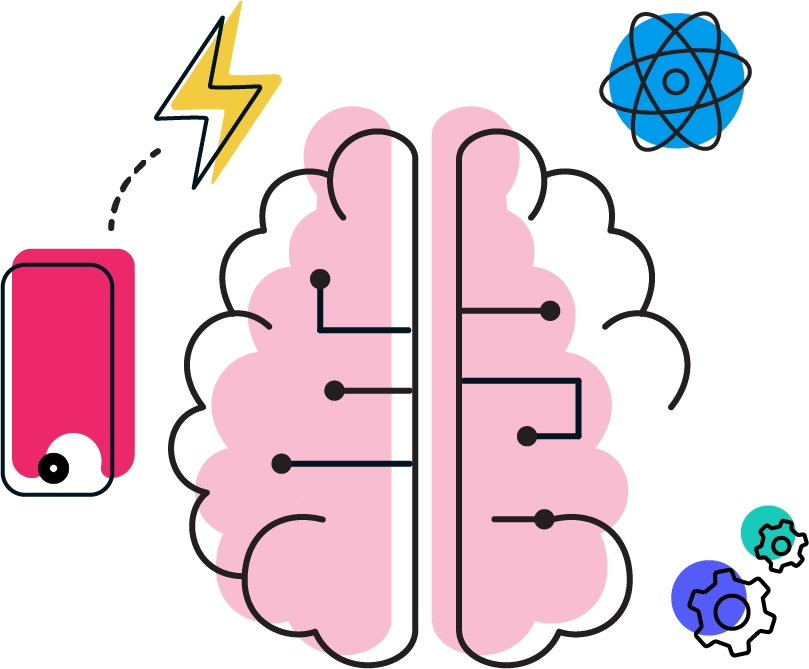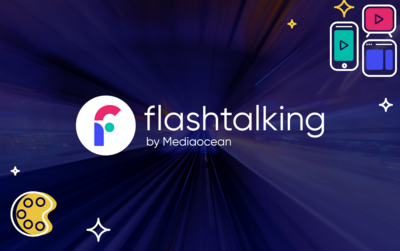


The advertising pendulum
The advertising industry over the past half century has grappled with the ever-shifting balance of power between creative and media. Throughout the 60s, 70s, and 80s—the “Mad Men” era—advertising was about the “Big Idea.” Creative ruled the day and the Don Drapers were the stars. The pendulum was completely on the creative side of the ledger and media was relegated to a fulfillment role.
In the 1990s, holding companies broke media buying into separate agencies, consolidating their negotiating power, and gaining access to more premium inventory at advantageous pricing. Then when the turn of the century hit, the internet ushered in a new age of marketing and new power. With its goldmine of data, media teams were pushed even further into the limelight and the pendulum began to shift.
With the introduction of programmatic, the pendulum swing away from creative accelerated. By the latter half of the 2010s, the media teams were the new stars of the industry, while the creative team suddenly found itself playing a fulfillment role.
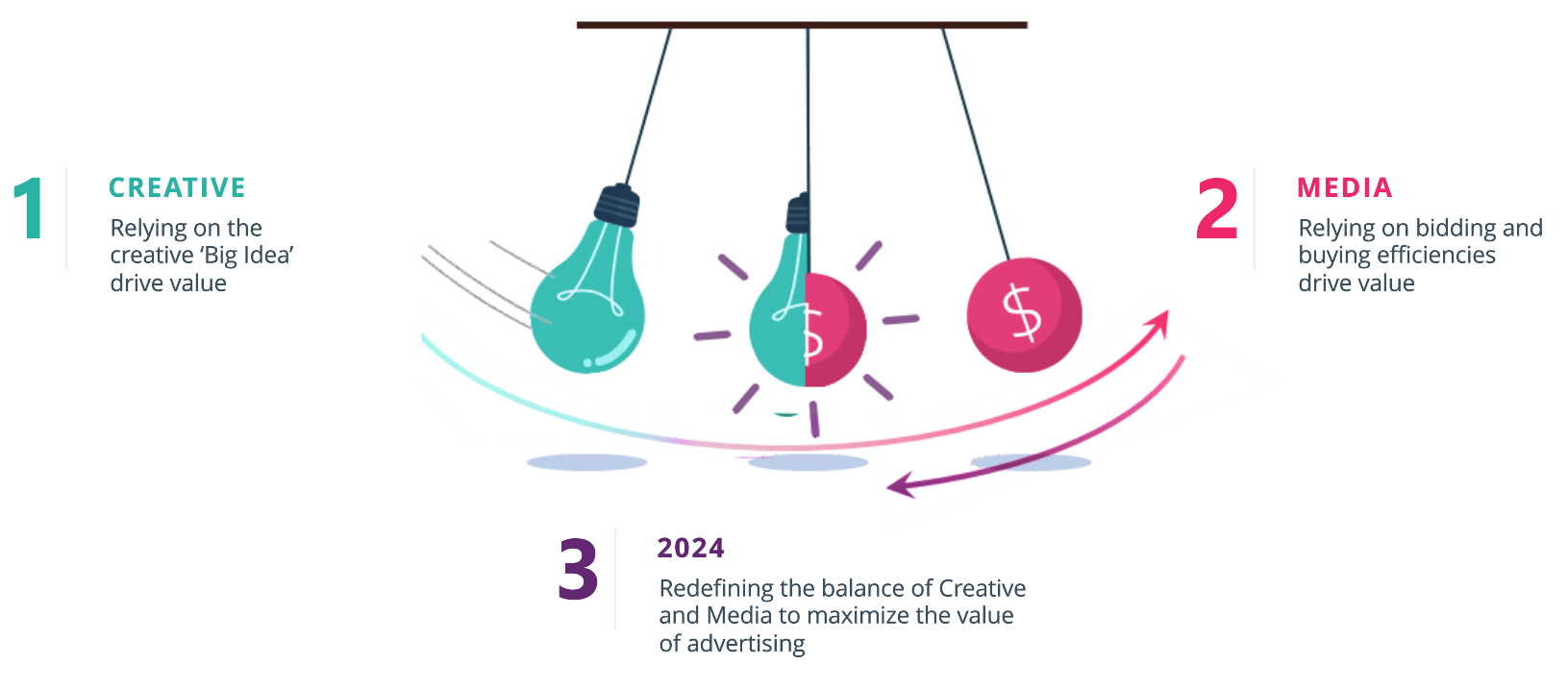
An imbalanced ecosystem
Any system that leans too far in one direction has consequences. This can be seen in everything from politics and religion to diets and fitness. Advertising is no different.
Over the last decade, the industry has been obsessing over bids, budgets, and targeting. Considerable time, effort, and resources are spent every day optimizing those levers. But after all that work, what do we do? Nine times out of ten, we show a standard piece of creative that lacks the relevance to engage your audience. Running generic creative is sabotaging your team's efforts to optimize campaign performance.
As an industry, we’ve leaned too heavily into media.
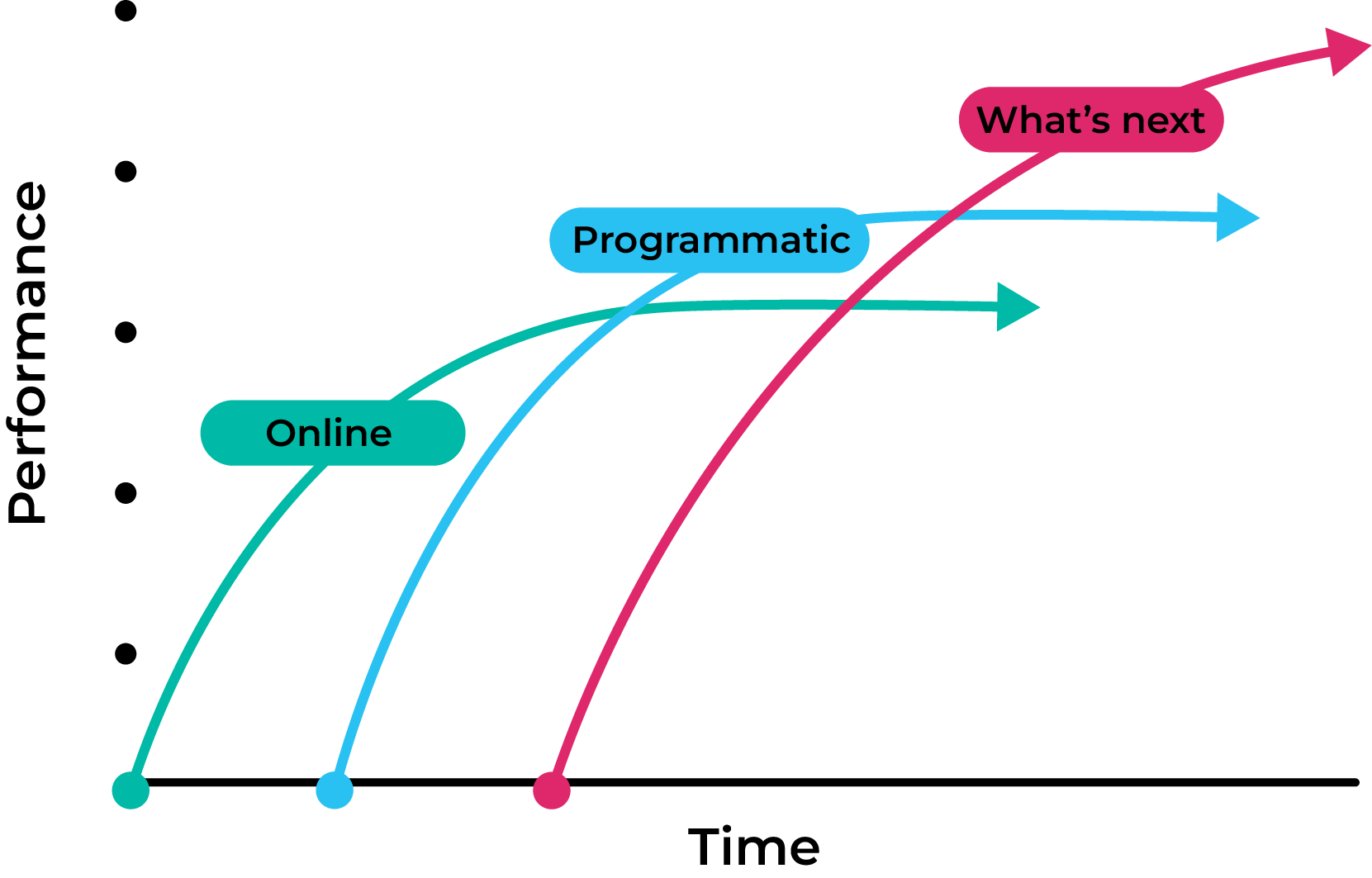
The “creative-media gap”
Over-indexing on media at the expense of creative causes an imbalance. We call it the “creative-media gap.” This gap has produced immense challenges in advertising and solving it represents the largest opportunity for growth.
Today’s creative-media gap manifests itself in three distinct ways:
- Siloed teams, process, and technology, creating inefficiencies with escalating costs and slow go-to-market
- Repetitive and irrelevant messaging, numbing consumers and reducing their responsiveness
- Lack of creative intelligence, creating hurdles in learning what content resonates
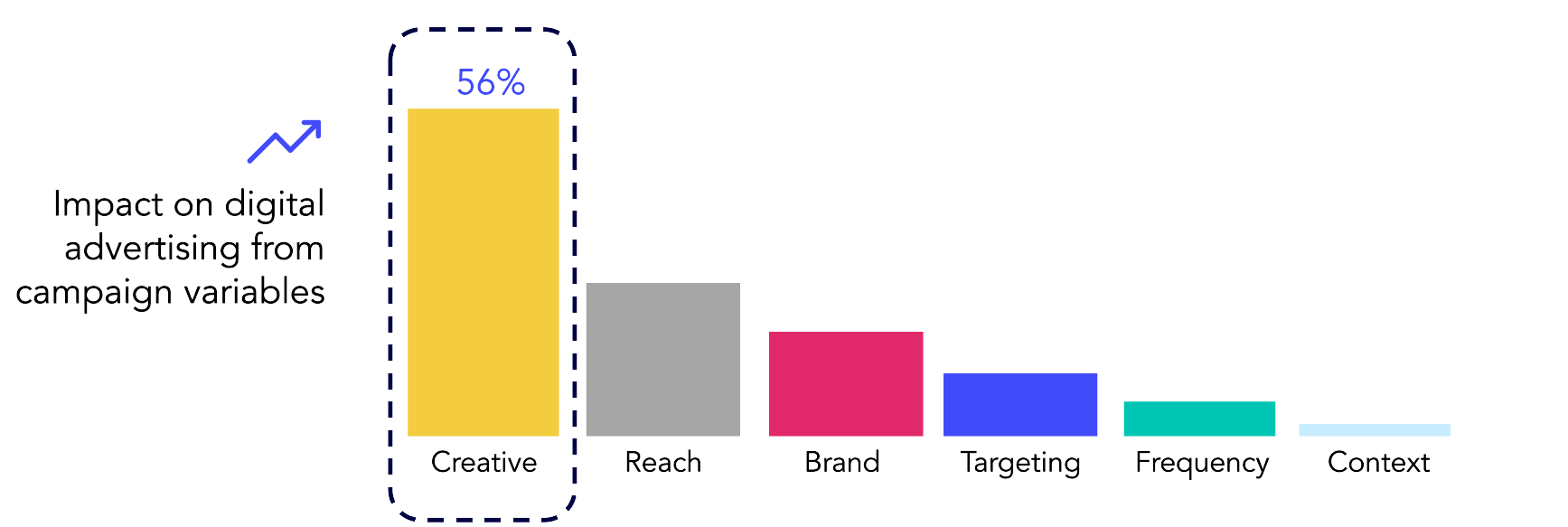
Creative is the next frontier
After years of hyper-focus on media, advertisers now are looking for something different: creative technology that is focused on unleashing the power of creative to make media work better. That’s where we come in.
Flashtalking is the leading independent ad tech stack for creative relevance and activation across all digital marketing channels. We are focused on bridging the creative-media gap in three ways:
- Automation: connecting the silos across teams, processes, and technology platforms
- Relevance: connecting the brand message to the person, place, and moment
- Intelligence: connecting creative insights to action
Flashtalking enables a converged, omnichannel workflow with a consistent toolset to activate across devices, formats, and ecosystems. And, perhaps most importantly, our Creative Ad Tech stack integrates with your existing platforms and partners across both creative and media.
Learn more
If you are interested in bridging the creative-media gap for your brand, reach out to us. Keep reading to discover how to enable great creative in the next blog post in the series.






